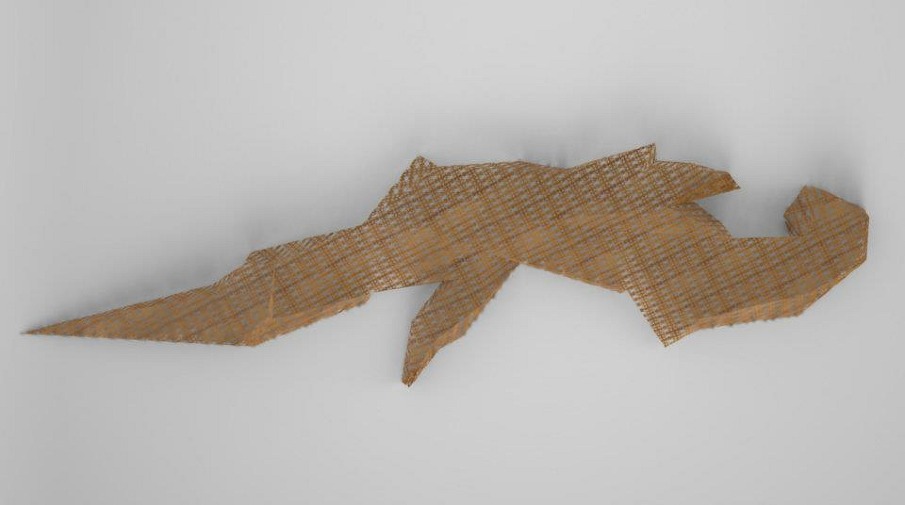
The motif, in Iban culture, is often carved into their weapons and sewn into their fabric, and is believed to embody the wearer with the powers and mystic of the creature.

The shape represents an abstraction of an actual biyak or monitor lizard, which is the animal used to construct the original motif made by the orang Iban.

The next step was to position the form on a flat surface, according to the orientation that we discussed as a group; horizontal with a slight diagonal tilt. This created dynamism in terms of visual impact, and at the size of 3 metres would further amplify the effect.
The patterns were also laid on top of the form, and a lot of discussion was held to ascertain the angle in which the patterns were laid in. We also managed to come up with a final rendering with the final material chosen; wood.
We encountered many challenges during the laser cutting process, which affected the outcome of the project. First of which was the wear and tear of the laser tube which made for inaccurate cuts on the 3mm wood, and we had to manually remove the individual pieces before a solid piece can be ready.
We also failed to notice a major flaw in the design system of connecting the wood panels together. The patterns had to be cut at an incredibly small size to allow for such intricate and precise geometric cuts, and with the laser tube not working at its maximum potential, we had to reorganize the entire direction of the project.
After much deliberation, we decided to create an exploded form instead of a connected one, placed on styrofoam and covered with sand to create a natural, organic look.
We also failed to notice a major flaw in the design system of connecting the wood panels together. The patterns had to be cut at an incredibly small size to allow for such intricate and precise geometric cuts, and with the laser tube not working at its maximum potential, we had to reorganize the entire direction of the project.
After much deliberation, we decided to create an exploded form instead of a connected one, placed on styrofoam and covered with sand to create a natural, organic look.


